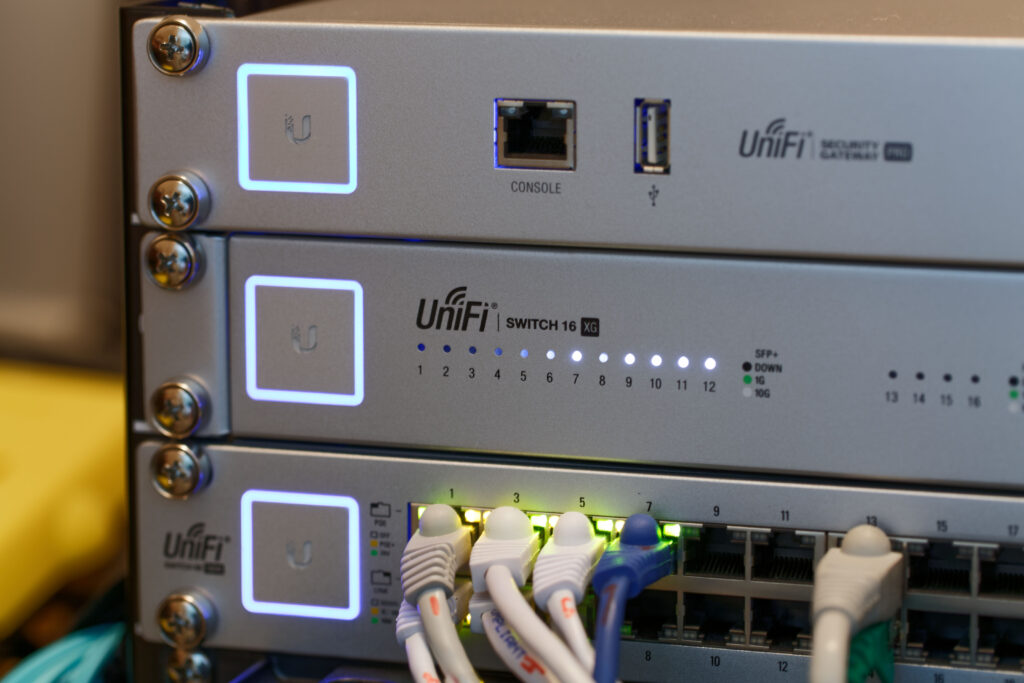Enterprise Routers & Switches
Enterprise routers and switches are integral components of network infrastructure in organizations of all sizes. They play a crucial role in ensuring reliable and efficient data transmission, network connectivity, and security. Here, we will explore these devices in greater detail.
1. Routers:
Enterprise routers are specialized network devices designed to connect different networks and facilitate data traffic between them.
2. Switches:
Enterprise switches are network devices that connect devices within a local area network (LAN) and determine how data traffic should be forwarded to the appropriate destination.
- Routing: Routers determine the optimal path for data packets to travel from the source to the destination, considering factors like network topology and traffic conditions. This enables data to flow efficiently across interconnected networks.
- Security: Routers often include firewall capabilities and access control lists (ACLs) to protect the network from unauthorized access and potential threats. They can also implement Virtual Private Networks (VPNs) to secure data transmission over public networks.
- Network Address Translation (NAT): NAT allows routers to map private IP addresses to a single public IP address, enabling multiple devices within a network to share a single public-facing IP. This helps conserve IPv4 addresses and enhances network security.
- Quality of Service (QoS): Routers can prioritize certain types of traffic to ensure that critical applications, such as voice and video conferencing, receive the necessary bandwidth and low latency.
- Redundancy and Failover: Enterprise routers often support redundancy and failover mechanisms to ensure network availability. These features are critical for businesses that require continuous network operation.
- Packet Forwarding: Switches use MAC addresses to forward data packets to the correct device within the same LAN, improving network efficiency by reducing broadcast traffic.
- VLAN Support: Switches enable the segmentation of LANs into Virtual LANs (VLANs), allowing network administrators to isolate and control traffic for different departments or purposes.
- Power over Ethernet (PoE): Many enterprise switches provide PoE, which delivers power to devices like IP phones, security cameras, and access points over the same Ethernet cable used for data transmission.
- Managed vs. Unmanaged Switches: Enterprise switches are typically managed, which means they can be configured and monitored to optimize network performance. Unmanaged switches are more straightforward and lack advanced features.
- Link Aggregation: Managed switches can aggregate multiple network links, increasing bandwidth and providing redundancy. This is important for high-availability networks.
- Security Features: Managed switches often include security features such as port security, which restricts the number of MAC addresses that can be connected to a port, and 802.1X authentication for network access control.

Benefits of Enterprise Routers and Switches:
| Reliability | Enterprise-grade routers and switches are designed for high reliability and can withstand heavy network traffic. |
| Scalability | They can accommodate growing network requirements by supporting additional devices and expanding network capacity. |
| Security | These devices offer robust security features, essential for protecting sensitive data and maintaining network integrity. |
| Optimized Performance: | Enterprise routers and switches can be configured to ensure optimal network performance and efficiency. |
| Centralized Network Management | Managed switches and routers offer centralized control and monitoring, simplifying network administration. |
